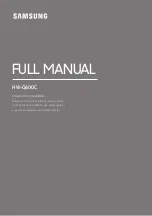
3. Ensure the following conditions are met:
a) The circulator shaft is horizontal.
b) The clock/timer face is accessible for viewing and adjustment.
c) The direction of water flow matches the arrow on the circulator casing.
d) The piping is sufficiently rigid to support the system in operation.
e) Neither the clock/timer nor black terminal box is under the circulator.
4. If the arrow on the circulator casing is not pointing away from the hot water heater,
see
ROTATING THE CIRCULATOR CASING.
5. To mount the Astro Express LF valve:
a) Select the faucet to be controlled, typically the furthest faucet from the hot water
heater. (For multi-branch hot water piping runs, a valve may be required at the
end of each branch for maximum effectiveness.)
b) Disconnect the hot and cold supply pipes from the faucet.
c) Connect the hot and cold water supply to the Astro Express LF valve 1/2"
threaded inlets. (Stainless steel flex hose recommended.)
d) Connect the hot and cold Astro Express LF valve 3/8" threaded outlets to the
faucet. (Stainless steel flex hose recommended.)
e) Secure the valve to the wall under the sink, using the plastic wall anchor and
screw.
6. Check the installation for leaks:
a) Ensure the faucet is closed.
b) Turn on the water supply.
c) Open the hot and cold water supply valves.
d) Open the faucet hot and cold taps to purge all air from the system. Close the faucet.
e) Inspect the circulator and valve connections for leakage. If a leak exists, close hot and cold supply valves until
leaks are corrected.
7. To connect power to the circulator:
a) Verify that the timer’s manual over-ride switch is in the “OFF” position.
b) Plug the power cord into a standard 115 Vac household electrical receptacle.
c) To perform and initial system test, see
OPERATION.
ROTATING THE CIRCULATOR CASING
Prior to connecting the system to the hot water piping, if alternate orientation of either the
circulator discharge or clock timer is required, proceed as follows:
1. Remove the four hex socket head screws that hold the casing to the circulator.
2. Gently pull the casing from the circulator body, taking care not to damage the gasket or
impeller.
3. Rotate the casing as required to meet circulator discharge and clock timer orientation
requirements.
4. Tighten the four hex socket head screws evenly; ensuring the gasket seals the mating
surfaces.
5. To verify the circulator shaft still spins freely:
a) Remove the plug from the end of circulator with a slotted screwdriver.
b) Insert the screwdriver in the slot in the end of the shaft.
c) Ensure the shaft turns freely and smoothly in both directions.
d) Replace the plug and gently tighten.
Page 3 of 5























